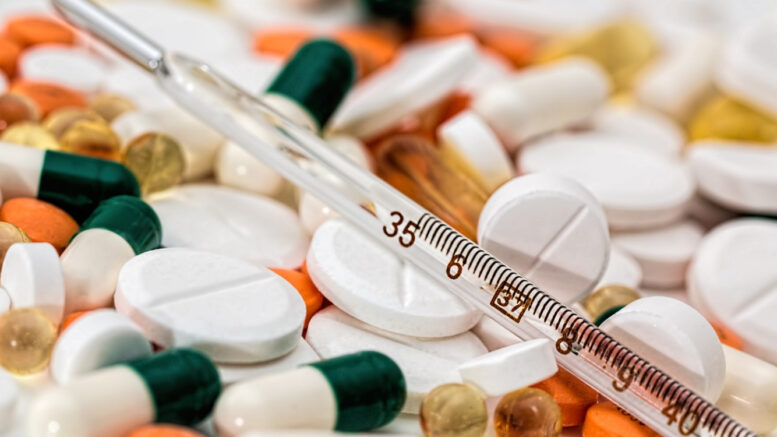Introduction
Life-saving drugs are pharmaceuticals that prevent death or serious health complications. These medications are vital in treating a variety of conditions, ranging from chronic diseases like cancer and diabetes to acute illnesses like infections and heart attacks. The development, manufacturing, and distribution of life-saving drugs are critical components of the healthcare industry, significantly impacting global health outcomes.
Rifaximin drug manufacturer focus on producing this antibiotic to treat various gastrointestinal disorders, including irritable bowel syndrome and traveler’s diarrhea, ensuring high standards of quality and safety in their production processes.
Importance of Life-Saving Drugs
Life-saving drugs are indispensable in modern medicine. They can:
- Prevent Mortality: Many conditions, if left untreated, can lead to death. Life-saving drugs provide the necessary intervention to prevent such outcomes.
- Improve Quality of Life: Beyond just preventing death, these drugs can significantly enhance the quality of life by managing symptoms and improving overall health.
- Economic Benefits: Effective treatments reduce the burden on healthcare systems by preventing prolonged illnesses and hospitalizations.
Categories of Life-Saving Drugs
Life-saving drugs span a wide range of therapeutic categories, including:
- Antibiotics: These combat bacterial infections that could otherwise lead to severe health complications or death.
- Antivirals: Essential for treating viral infections like HIV/AIDS, hepatitis, and influenza.
- Chemotherapy Agents: Critical in the treatment of various cancers, helping to reduce tumor size and prevent metastasis.
- Cardiovascular Drugs: Used to manage heart diseases, prevent heart attacks, and treat conditions like hypertension and arrhythmias.
- Insulin and Diabetes Medications: Vital for the management of diabetes, preventing complications such as diabetic ketoacidosis.
Key Life-Saving Drugs
1. Antibiotics
- Penicillin: The first antibiotic discovered, still used to treat a range of bacterial infections.
- Ciprofloxacin: Effective against a variety of bacterial infections, including those resistant to other antibiotics.
2. Antivirals
- Antiretrovirals (ARVs): Used in the treatment of HIV/AIDS, ARVs help manage the virus and prevent the progression to AIDS.
- Oseltamivir (Tamiflu): Used for the treatment and prevention of influenza.
3. Chemotherapy Agents
- Cisplatin: Used in the treatment of various cancers, including testicular, bladder, and ovarian cancer.
- Doxorubicin: Effective in treating several types of cancer, such as breast cancer and leukemia.
4. Cardiovascular Drugs
- Aspirin: Used in low doses to prevent heart attacks and strokes.
- Atorvastatin: Helps lower cholesterol levels, reducing the risk of heart disease.
5. Insulin and Diabetes Medications
- Insulin: Essential for the management of Type 1 diabetes and, in some cases, Type 2 diabetes.
- Metformin: A first-line treatment for Type 2 diabetes, helping to control blood sugar levels.
The Manufacturing Process
The manufacturing of life-saving drugs involves several stages:
- Research and Development (R&D): This is the initial stage where new drugs are discovered and developed. It involves extensive research, including preclinical and clinical trials, to ensure the drug’s safety and efficacy.
- Regulatory Approval: Once a drug has passed clinical trials, it must be approved by regulatory bodies such as the FDA (Food and Drug Administration) or EMA (European Medicines Agency).
- Production: This stage involves the actual manufacturing of the drug. It requires strict adherence to Good Manufacturing Practices (GMP) to ensure the drug’s quality and safety.
- Quality Control: Rigorous testing is conducted throughout the production process to ensure that the drug meets all quality standards.
- Distribution: After production, the drug is distributed to pharmacies, hospitals, and healthcare providers, ensuring it reaches the patients who need it.
Challenges in Access to Life-Saving Drugs
Despite their importance, access to life-saving drugs can be limited by various factors:
- Cost: Many life-saving drugs are expensive, making them inaccessible to those without adequate insurance or financial resources.
- Availability: In some regions, especially in low- and middle-income countries, essential drugs may not be readily available due to logistical challenges.
- Regulatory Barriers: Differences in regulatory standards across countries can delay the availability of new drugs.
- Intellectual Property Issues: Patents on new drugs can limit the production of generic versions, keeping prices high.
Strategies to Improve Access
To address these challenges, several strategies can be implemented:
- Generic Drug Production: Encouraging the production of generic drugs can make life-saving medications more affordable.
- Subsidies and Insurance: Government subsidies and comprehensive insurance plans can help reduce the financial burden on patients.
- Global Health Initiatives: International organizations like the WHO (World Health Organization) work to improve access to essential medicines worldwide.
- Partnerships and Collaborations: Partnerships between pharmaceutical companies, governments, and non-profits can enhance drug distribution and availability.
Future of Life-Saving Drugs
The future of life-saving drugs looks promising, with advancements in technology and medicine driving innovation. Some key areas of focus include:
- Personalized Medicine: Tailoring treatments to individual patients based on their genetic makeup, leading to more effective and targeted therapies.
- Biologics and Biosimilars: These include complex molecules like proteins and antibodies that can treat a variety of conditions more effectively than traditional small-molecule drugs.
- Telemedicine and E-Pharmacies: These innovations can improve access to medications, especially in remote or underserved areas.
- AI and Machine Learning: These technologies can accelerate drug discovery and development, bringing new treatments to market faster.
Conclusion
Life-saving drugs play a crucial role in maintaining and improving health. While challenges exist in ensuring global access, ongoing efforts by governments, organizations, and the pharmaceutical industry are making strides in overcoming these barriers. The continued advancement of medical science promises an even brighter future for the development and distribution of these essential medications, ultimately leading to healthier lives for people around the world.

Be the first to comment on "Life-Saving Drugs: Key to Health Living For Human"